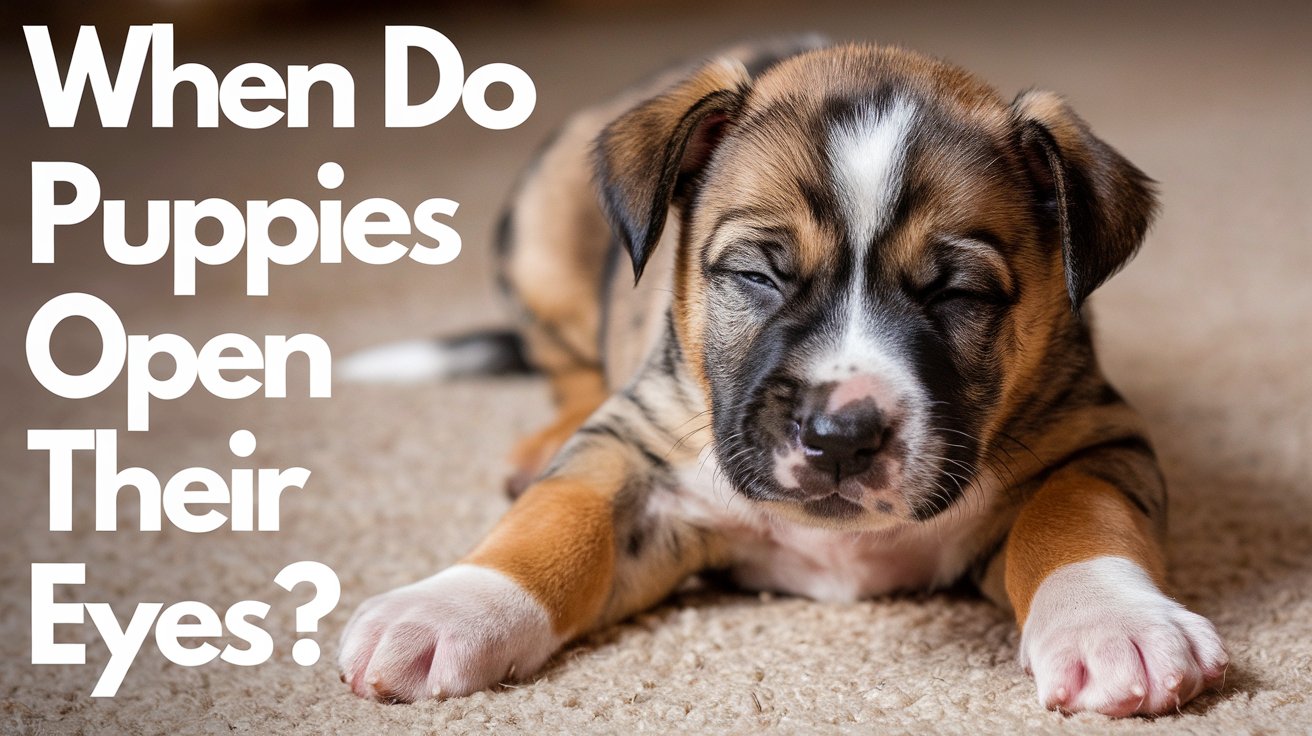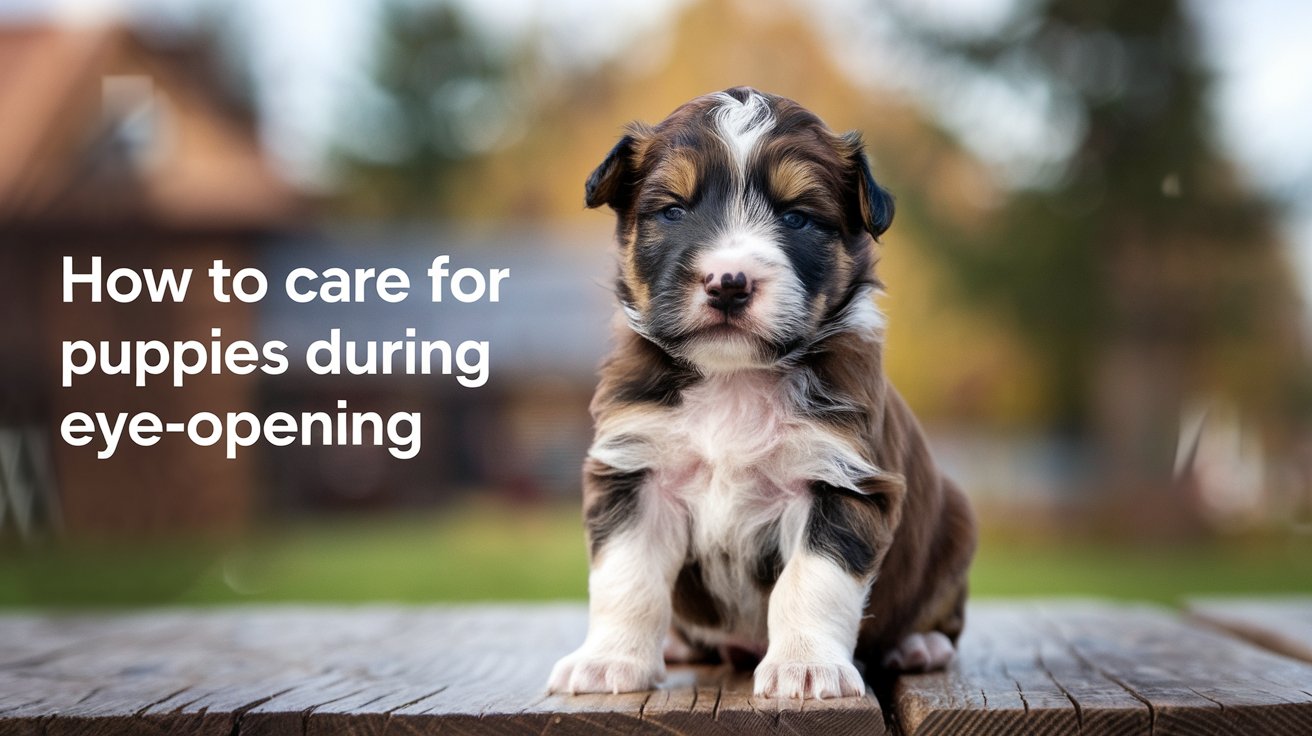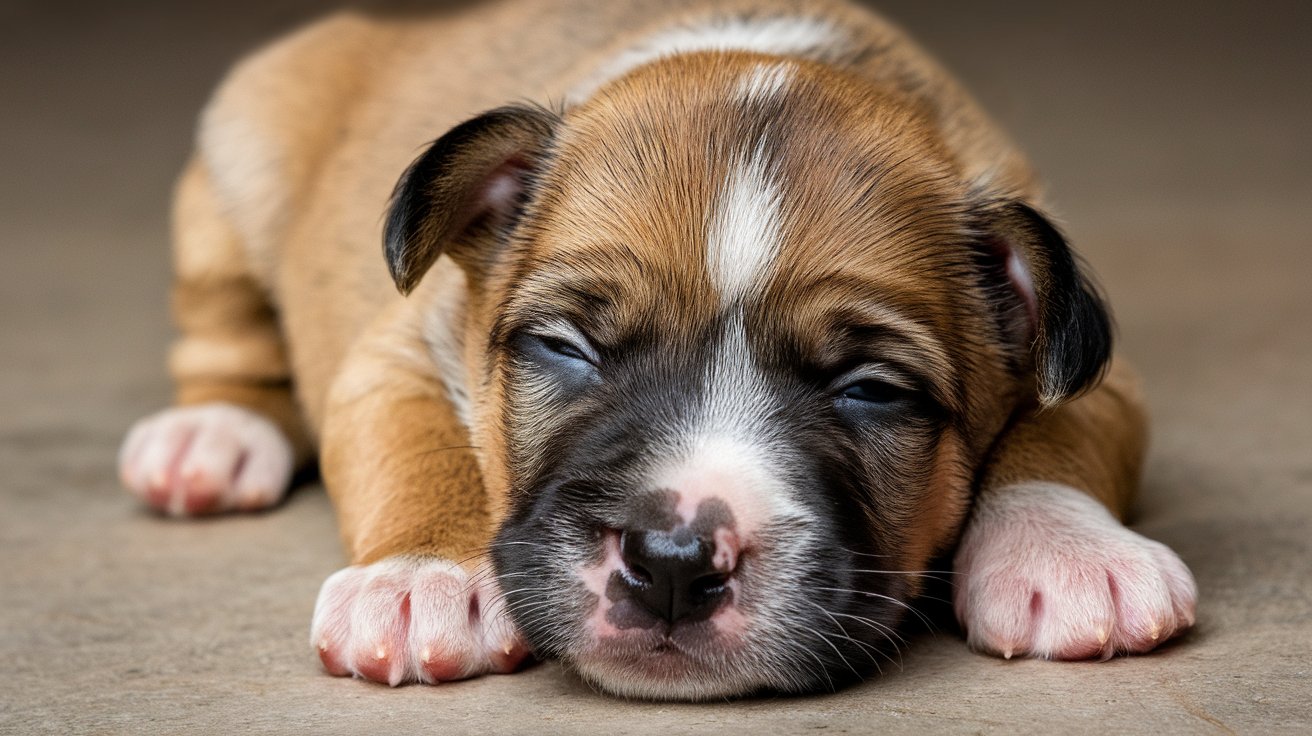
When Do Puppies Open Their Eyes?
The Timeline of Puppy Eye Development
When do puppies open their eyes? Typically, puppies begin to open their eyes between 10 to 14 days after birth. This process is gradual, with their eyelids slowly parting to reveal cloudy, bluish-gray eyes. Although every breed and individual puppy may vary slightly, the general range falls within this period. It’s essential to note that, even after their eyes are open, their vision will remain underdeveloped for several weeks.
Why Are Puppies Born With Their Eyes Closed?
Newborn puppies are born with their eyes tightly shut for a reason. In the womb, their eyes do not fully develop, and keeping them closed helps protect their delicate optic nerves and retinas. As their bodies continue to grow and develop outside of the womb, their visual system slowly matures, preparing them for the next stage of their journey—sight.
The reason why puppies are born with their eyes closed ties back to the fact that dogs, unlike some mammals, undergo much of their sensory development after birth. At birth, they rely on their other senses, such as touch and smell, to navigate their environment and bond with their mother.
What Happens During the Eye-Opening Process?
When puppies open their eyes, they don’t suddenly gain full sight. During the first few weeks, their eyes will be particularly sensitive to light, and their vision remains blurry. The corneas are still developing, and while they can make out vague shapes and light, they cannot yet see clearly.
Puppies will mostly rely on smell and touch during these early days, despite their newfound ability to open their eyes. As the days pass, their eyesight gradually improves, allowing them to begin identifying objects, shapes, and eventually, movement.
The Role of Breed in Puppy Eye Development
While the window for puppies to open their eyes generally falls between 10 and 14 days, different breeds may experience slight variations. For example, small toy breeds like Chihuahuas may take a bit longer to open their eyes compared to larger breeds like Labradors. Breed variations in puppy eye development can sometimes be influenced by genetic factors and the rate of overall growth.
What to Expect Once Puppies Open Their Eyes
Once puppies open their eyes, it’s important to monitor their development. Their eyes will appear cloudy, and they may struggle to focus initially. During this phase, owners may notice puppies seem disoriented or unsure as they explore their surroundings. Don’t be alarmed—this is a normal part of the learning process as their vision improves.
Over the next several weeks, puppies’ eye color may change from a bluish-gray to their permanent adult eye color. Additionally, their vision will become sharper as they begin to rely more on sight to interact with their littermates and environment.

How to Care for Puppies During Eye-Opening
The time when puppies open their eyes is delicate. Owners must provide a safe, comfortable environment to ensure proper vision development. Here are a few key tips to help your puppies during this phase:
- Limit exposure to bright light: Puppies’ eyes are susceptible to light during the first few weeks. Avoid exposing them to harsh or direct sunlight, which can harm their developing eyes.
- Maintain a clean environment: Puppies’ immune systems are still developing, making them susceptible to infections. Keep their bedding clean, and ensure that their eyes remain free from debris or discharge.
- Monitor for eye infections: If you notice any signs of eye discharge, swelling, or redness, contact a veterinarian.
Potential Issues With Eye Development
While most puppies will open their eyes without any issues, some may experience delayed development or other complications. If puppies have not opened their eyes by 16 to 18 days, it’s a good idea to consult a veterinarian. Other potential issues include:
- Eye infections: Puppies are prone to bacterial infections, especially in unsanitary environments. Early signs include redness, swelling, or crusting around the eyelids.
- Congenital issues: Occasionally, puppies may be born with eye conditions such as cataracts or glaucoma, which could affect their vision in the long term.
Understanding Puppy Behavior After Eye-Opening
Puppy behavior changes dramatically once they can see. Their curiosity blossoms, and they begin to interact more with their littermates and environment. This stage of life is characterized by a burst of exploration, as puppies start to coordinate their senses—sight, sound, and smell—to learn about the world.
Interestingly, even after puppies open their eyes, they still depend heavily on their sense of smell. Their mother’s scent remains their primary source of comfort, and their sense of smell is what guides them to her for nursing.
When Do Puppies Start Seeing Clearly?
Although puppies begin opening their eyes at around 10 to 14 days, it will take them several more weeks to develop clear vision. Puppies start seeing clearly by the time they are around 8 weeks old. During this period, their eyes will be fully developed, allowing them to focus, track movement, and explore their environment with greater confidence.
The Importance of Socialization After Eye-Opening
The weeks following eye-opening are critical for a puppy’s social development. As their vision improves, they begin to engage more with their littermates, learning crucial social behaviors like play-fighting and communication. This period is vital for teaching puppies how to interact appropriately with both dogs and humans.
Socialization is key to raising a well-adjusted dog. Puppies that are exposed to a variety of experiences, sights, and sounds during this time are more likely to grow into confident, well-rounded adults. Owners should take advantage of this window by introducing puppies to new environments, people, and gentle experiences that will help shape their temperament.
The Role of Eyes in Puppy Communication
A puppy’s eyes play a significant role in their communication as they develop. Once they can see clearly, dogs use eye contact to express emotions, recognize their owners, and even signal dominance or submission. Understanding puppy eye communication can help owners better read their dog’s emotional state and respond appropriately.
For example, direct eye contact from a puppy often signals curiosity or a desire for interaction, while avoiding eye contact can indicate shyness or submission.
How Puppy Eyes Differ From Adult Dog Eyes
While puppies’ eyes eventually develop into fully functioning adult eyes, the two have a few key differences. For one, puppies often have blue or gray eyes when they are young, which change color over time. Additionally, puppy eyes differ from adult eyes in terms of visual acuity. Puppies are nearsighted when their eyes first open, meaning they struggle to see objects far away. However, as their eyes mature, their ability to see distant objects improves significantly.

FAQs
When do puppies open their eyes for the first time?
Puppies, after birth, open their eyes between 10 to 14 days. However, their vision remains underdeveloped for several weeks after their eyes first open.
Why are puppies born with their eyes closed?
Puppies are born with their eyes closed because their optic nerves and retinas are still developing. Keeping their eyes shut protects these delicate structures until they are ready to handle light and visual stimulation.
How can I help my puppy’s eyes develop properly?
To support healthy eye development, provide a clean, dimly lit environment and monitor for any signs of infection. It’s essential to keep their living area free from debris and ensure that their eyes are not exposed to bright light during the early weeks.
What should I do if my puppy hasn’t opened its eyes by 16 days?
If your puppy hasn’t opened its eyes by 16 to 18 days, it’s advisable to consult a veterinarian to rule out any developmental issues or infections.
Can puppies see right after opening their eyes?
No, puppies’ vision is blurry when they first open their eyes. It takes several weeks for their vision to fully develop, and they usually begin to see clearly by around 8 weeks old.
What are the signs of an eye infection in puppies?
Signs of an eye infection in puppies include redness, swelling, discharge, and excessive squinting.

I’m Haseem Ali, a passionate writer focused on dog diet, health, training, lifestyle, and care. I’m dedicated to sharing expert advice and practical tips to help fellow dog owners provide the best for their furry friends. When I’m not writing, I enjoy spending time with my own dogs and exploring new pet-friendly activities.
